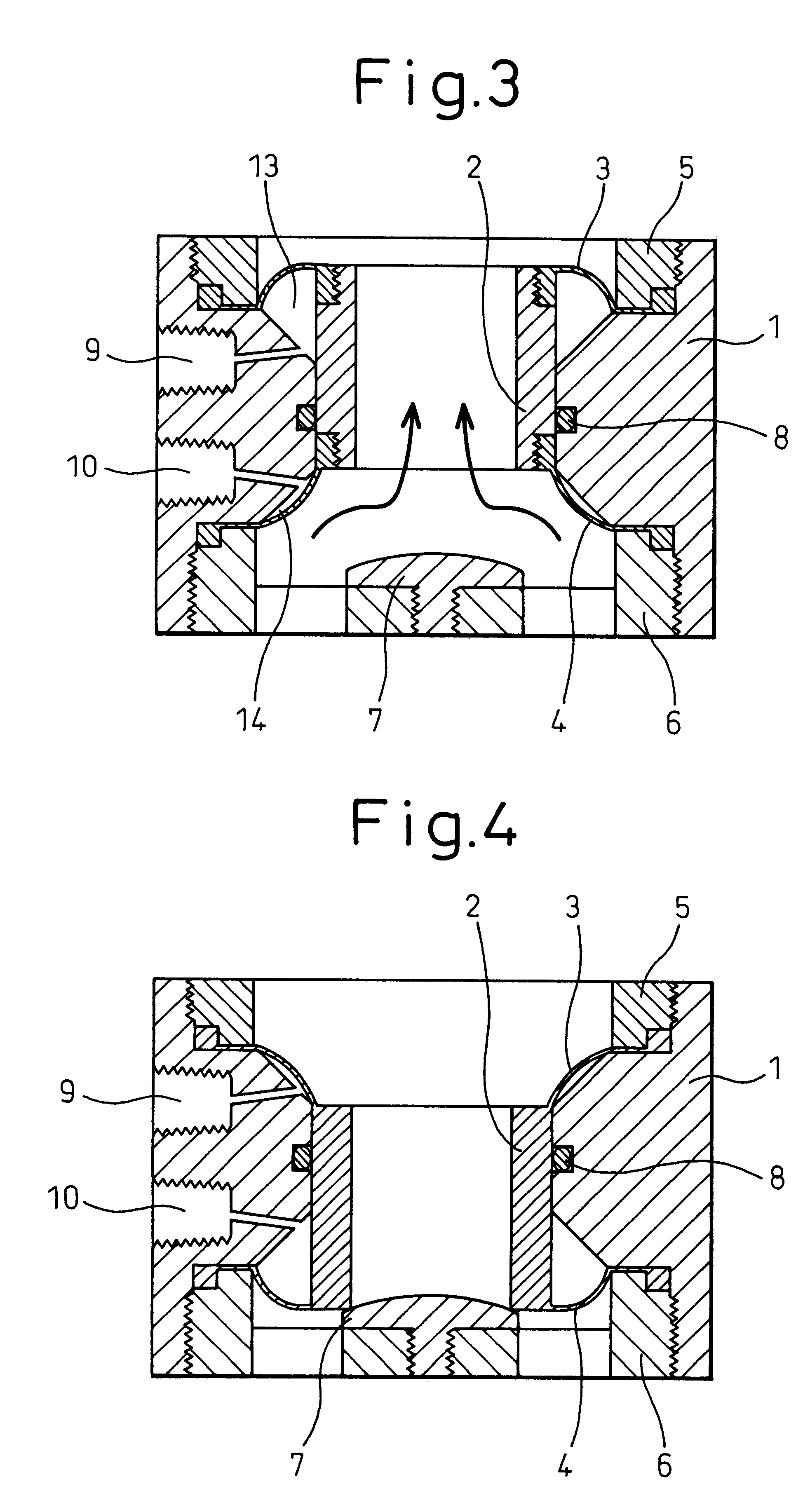Automatic valve
a technology of automatic valves and valve bodies, applied in the direction of diaphragm valves, operating means/release devices of valves, engine diaphragms, etc., can solve the problems of disadvantage of above conventional automatic valves, large pressure loss, and inability to adapt to practical us
- Summary
- Abstract
- Description
- Claims
- Application Information
AI Technical Summary
Problems solved by technology
Method used
Image
Examples
third embodiment
FIG. 5 is a longitudinally cross-sectional view showing the present invention. In this embodiment, the fluid communicating ports 24, 25 of the first diaphragm presser 22 and the second diaphragm presser 23 are respectively formed on the sides of the diaphragm pressers. Accordingly, the profile of the flowing path of fluid is curved. In this structure, the cylindrical body 1 and both the diaphragm pressers 22, 23 are integrated into one body by bolts and nuts. Operation of the valve of this embodiment is the same as that of the embodiment described before. Therefore, an explanation will be omitted here.
first embodiment
FIG. 6 is a longitudinally cross-sectional view showing an example of the state in which the automatic valve of the first embodiment is arranged in a piping line. In this structure, the automatic valve and the pipes are connected with each other as follows. The body caps 28, 29 to which the pipes 3031 are respectively fixed are fixed onto both sides of the automatic valve in such a manner that the cap nuts 26, 27 are screwed to the outer circumferential end sections of the cylindrical body 1 via O-rings 32, 33.
PUM
 Login to View More
Login to View More Abstract
Description
Claims
Application Information
 Login to View More
Login to View More - R&D
- Intellectual Property
- Life Sciences
- Materials
- Tech Scout
- Unparalleled Data Quality
- Higher Quality Content
- 60% Fewer Hallucinations
Browse by: Latest US Patents, China's latest patents, Technical Efficacy Thesaurus, Application Domain, Technology Topic, Popular Technical Reports.
© 2025 PatSnap. All rights reserved.Legal|Privacy policy|Modern Slavery Act Transparency Statement|Sitemap|About US| Contact US: help@patsnap.com



